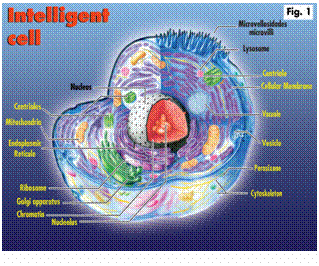 Intelligence (I): Regulating entity that controls and joins parts of a living system in a functional unit, directed and geared towards survival.
Intelligence (I): Regulating entity that controls and joins parts of a living system in a functional unit, directed and geared towards survival. |
метод ГРВ профессора К.Г. Короткова |
|||||||||
|---|---|---|---|---|---|---|---|---|---|
The Systemic Theory and its application in Diabetic Foot
Engineer José A. Olalde Rangel
Abstract
This paper presents a new approach to prescribing herbal medicines and provides proof of its workability in a chosen pathology: Diabetic Foot. Based on the author's Systemic Theory, developed over the years 1995 - 2004, Systemic Medicine (SM) originates on an integral systems approach to understanding health. It is based on the phenomenological idea that physiological health is centered on three factors: integrity of its structure or organization O, amount of available energy E, and level of active biological intelligence I. The latter regulates the whole system and controls its interactions with the environment, meeting the challenges of various aggressors. It is the most important of the three, since it is responsible for maintaining both internal energy and organization -the other two factors- without which it cannot itself function. The treatment strategy is based on identifying which herbs or other medicines strengthen each factor. Systemic medicine postulates that the health H, of an individual, is effectively equal to the product of the strength of each factor H = O x E x I, and observes that when all three factors are brought back to ideal levels, patients' conditions begin the return to health. On the other hand, one of the most feared ills in diabetic patients is the emergence of feet ulcers as a consequence of the two most common chronic complications in this pathology: peripheric neuropathy and vascular insufficiency. Allopathic medical treatment does not render effective results in patients that suffer Diabetic Foot, reason why a high percentage suffer toe, feet and even leg amputations, and renders this a good testing ground for SM.
I. Brief history of Systemic Theory's phenomenology
Fire - H, F, O At the end of the 18th century, Lavoisier (1) unveiled the mystery of fire, discovering that its anatomy -and minimum common denominator- constituted a triangle with 3 sides, heat (H), fuel (F) and oxygen (O). Deducing, also, its biconditional attribute, i.e., Fire can occur if and only if all three elements are present in the proper conditions and proportions - H, F, O - Fire. Since then the triangle has been the basis for all fire fighting strategies around the world.
Life - E, I, O As result of his engineering background, strong interest in philosophy, health, phytotherapy (2) (3) and a familiarity with the General Adaptation Syndrome (4) (5) , the author recognized in energy E, intelligence I and organization O a minimum common denominator of living systems -a triangular anatomy- analogous to the fire triangle. A biological system can only exist, if and only if, the three elements are present, and vice versa: E, I, O - Life. The author proposed an application in the field of phytotherapy (6) and medicine (7) . The application consisted in classifying and applying herbs according to: Energy stimulating properties; Biological Intelligence modulators; and finally, Organizational (structure and functional) pathologically targeted enhancers.
The author's work established a logical framework under which phytotherapy, subtle medicines and even orthodox medicines, can be administered with clinical success, to chronic patients suffering from “incurable” diseases. A method for healthcare practitioners who have not inherited the art or are disillusioned at iatrogenic results of allopathic medicine. Reason why many patients are seeking CAM.
I. The Systemic Theory of Living Systems (Key Definitions)
Logic: Correct reasoning that forms the basis of any science.
Living System: a unit comprised of elements that work in harmony, each in service to the other, to achieve the common goal of survival. This definition applies to bacteria, viruses, ant colonies, persons, groups, institutions or countries.
Energy (E): Any fuel that causes action or movement; that which makes things occur.
 Intelligence (I): Regulating entity that controls and joins parts of a living system in a functional unit, directed and geared towards survival.
Intelligence (I): Regulating entity that controls and joins parts of a living system in a functional unit, directed and geared towards survival.
Organization (O): Any group of elements ordered as a functional unit, directed towards goals established by the intelligence that rules them; structure and function. In a living system, functions performed by I, E and O are similar to functions carried out in a moving vehicle, by driver, fuel and the vehicle itself.
The logics
The objective of the Living System is to seek maximum survival. (8)
The cell is the simplest living system (Fig. 1) which functions as a basic building block of the living universe, just as an atom does in matter. Conversely, a virus is the simplest living system that acts as a destroyer of a fit living system.
Intelligence is the spine of all living systems in equilibrium. It controls, regulates, adapts and develops the living system. Chaos occurs in its absence. Proof: no living system can exist without intelligence.
The `common denominator´ in all living systems is the triad: I, E and O. This is a self evident truth and an essential condition to all living system in the known universe.
This common denominator is a triad because no one of its constituent elements can exist in the absence of any of the other two.
The geometrical anatomy of the E, I and O triad, is in fact triangular.
Reasoning: When E (9) , I (10) or O decrease, the other two members also decrease. If E, I (11) or O increase, the other two increase. Finally, if a member fades the system dies: the other two cease to exist.
health of the system and health of the organism.
In this paper , Heath is defined as survival potential.
The Intelligence of the system creates and uses energy with the prime purpose of achieving organization of the system (Fig. 2)
Corollary: As a result, I cannot act optimally when subjected to a severe energy deficiency.
It also creates/builds the organization with the primary purpose of producing energy for the system. The Survival (Health)Triangle In every living system, E, I and O (12) (13) constitute the three essential sides of a triangle that represents survival. (Fig. 3)
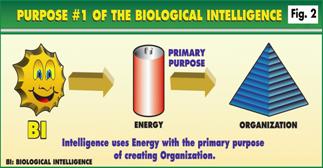
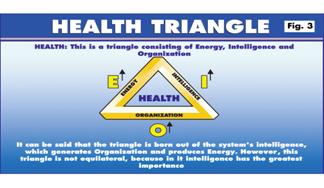
Each side constitutes a different aspect of the `survival´ phenomenon. All together they represent a measure of the survival potential, which by definition is the health of the system.
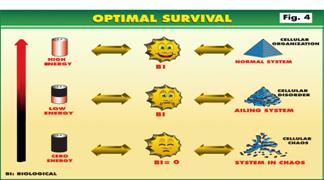
Thus H = Survival Potential =E x I x O
(Fig. 4). It's possible to increase survival (health) of a living system by increasing any of its three essential elements. The opposite is also true. The Potential Survival is diminished by a reduction in any of its essential components.
Finally: the Intelligence of the living System is the most important side of the triangle, since it simultaneously generates Energy and Organization. This is not an equilateral triangle because the system's intelligence acts as the generating entity. It is not necessarily a two dimensional triangle either. But, whatever its geometry, elucidation of this aspect was not essential to develop Systemic Therapy.
III. Expansion of the Systemic theory to the Human Body
Ideal medicine, natural or synthetic, is that which has the capacity to increase E, I, O in the oppressed human body. This is the golden standard to follow.
Non optimal medicine, natural or synthetic, is that, which though enhancing one or two sides of the triangle, simultaneously suppresses remaining side(s). These are referred to as secondary or side effects.
The common denominator of the human Biological Intelligence is constituted by the following trio:
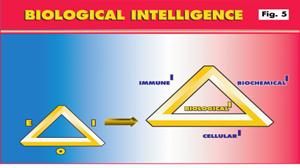
constitute a triad (Fig 5) since no side can exist in the absence of another.
The Immune intelligence (I I ) cannot exist without the cellular intelligence that generates it, or without the biochemical intelligence that allows its communications (14) (15) and maintenance.
(12)(13 ) and maintenance.
The Biochemical intelligence (IB) cannot exist without the immune intelligence, and vice versa, since there is a proven bidirectional relationship between both (14) (15) likewise, the biochemical intelligence cannot exist without the cellular intelligence (axiomatic).
The Cellular intelligence (IC) cannot exist (16) without the immune intelligence that protects it, nor without the biochemical intelligence that sustains and allows for information exchange; this is also axiomatic. A collapse of the biochemical or immune media (17) directly affects the cellular system. It is the most important side of the triangle.
The Biological Intelligence I constitutes a triangle (Fig. 6) composed by II , IB and IC . Each side is a different manifestation of the biologic intelligence phenomenon.
Reasoning: When a member of the triangle decreases the other two decrease. When a member increases the others increase. Finally, if a member disappears, the other two die: I ceases to exist.
The healing potential of I can be defined as the mathematical product of its immune strength,
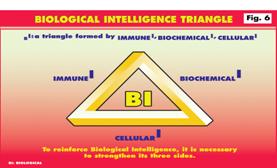
It is possible to enhance I by increasing any of its three essential components. This can be achieved if we provide the adequate active principles. The opposite also holds true, i.e., a collapse of any will impact the other two.
The triangle that conforms I is not equilateral because the Cellular Intelligence predominates, being the generating entity of both the Immune and Biochemical intelligence
Most chronic diseases are caused by negative life impacts on I that suppress and disable it. I is in optimum state when II , IC and IB are generating homeostasis and homeokinesis. I can be deactivated by emotional, physical, chemical or biological impacts, resulting in homeodynamics loss.
This is the beginning of organic chaos (illness) and eventual death. To heal organism from `incurable´ chronic diseases it is indispensable to reactivate the Biological Intelligence (I). If I biologic entity cannot be rehabilitated it will not be possible to heal the `incurable´ illness. In many cases it is possible to reboot I with phytomedicines and homeopathic remedies which stimulate the immune, neuroendocrine and cell (genetic) intelligence. I is capable of healing the organism: first, when activated and secondly when it has availability of active principles, vital for manufacturing energy and achieving biological organization. If I is not activated, cure will not be achieved even though energy and organizational resources are available.
IV. Abstract of Systemic Medicine application in Diabetic Foot (18)
The effects of a combination of phytomedicines formulated under the precepts of Systemic Medicine were evaluated in 91 patients with diverse degrees of Diabetic Foot in a retrospective, multicenter, descriptive, two year long study, concluding June 30th, 2004 .(19) Treatment improved 77% of patients, prevented amputation in 74.3% (in patients categorized as diabetic foot with risk of amputation), had a significant improvement in QoL (84%) and tolerability to treatment was outstanding (96.7%).
Table 1: Synopsis of Diabetic Foot Study in patients with moderate to high amputation risk |
|||
Element |
Nº of Patients |
% Patients |
Observations
|
Clinical Improvement |
70 |
77 |
Scar tissue formation, closing of wounds, downgrading in wound severity… |
Amputation prevention |
29 |
74.3 |
In 29 out of 39 patients graded 3 to 5. |
Tolerance |
88 |
96.7 |
All patients (3) who did not tolerate treatment had previous gastrointestinal ailments. |
Quality of life |
76 |
84 |
Patients increased QoL from poor to good
|
Ambulatory Therapy |
91 |
100 |
Better results can be obtained through a strict Hospital based therapy control. |
Conventional Therapy |
91 |
100 |
All patients continued their conventional therapy (insulin, antibiotics…). |
Systemic Medicine
|
91 |
100 |
All patients complemented therapy with S.M. |
Note: All patients were undergoing orthodox treatment and were nonetheless subject to amputation risk. |
|||
Method of evaluating patients: clinical examinations carried out by physician(s); self assessment regarding QoL (20) ; Wagner Scale of Severity (21) ; and patient's glucose levels in plasma. All measured before, during and after treatment in most cases. Glucose tolerance curve was not measured. In some cases Glycosylated hemoglobin and kidney function tests were performed. All patients -91- were graded
according to the Wagner diabetic foot scale. 39 patients or 42.8% of total population was graded 3-5 fgsdf.
or with a high probability of amputation. Amputation was prevented in 74.3% of this group. For photographic testimonials and other please see: http://www.adaptogeno.com/index_ing.html
V. Description of Systemic´s Diabetic protocol
The formulation of protocol (Fig. 7) is based on both the Health triangle and on its implicit Biological Intelligence Triangle. However, the scope of this work does not allow for a full description of active principles and action mechanisms for each phytomedicine in this pathology. Md´s trained in systemic technology would decide the adequate dosage for each case, depending on clinical evaluation of degree of injury.
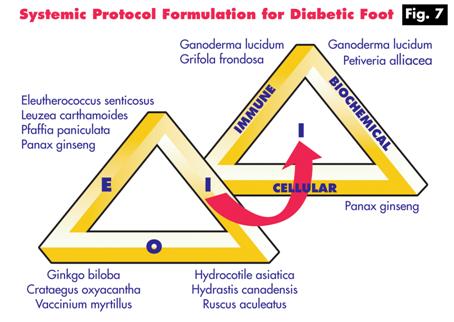
VI. Conclusions and Next Steps
The healing of disease cannot ignore the approach of a rigorous complementary and alternative medicine nor can it ignore the stimulation of energy and human's Biological Intelligence. The study and modulation of I Biological in medical therapy is a vital and fundamental breakthrough to enhance living systems. This is aligned with Cooper's concept `…to obtain a broad understanding…of the way the neuroendocrine system evolved, its function and coordination with other body systems…´ (22) Correction and/or prevention of a disease, such as diabetic foot, based solely on allopathic approach treating structure and function is non optimal. It ignores the importance of evaluating/correcting deficiencies of functional (organic) energy reserves and dysfunctions in the biological intelligence. An optimal therapeutic process should take into account enhancing and improving the immune, neuroendocrine and cellular intelligence. Allopathic medicine needs to rehabilitate the Hippocratic Oath and the Declaration of Helsinki. The author concludes that medicine should integrate the best of all medical practices into a non iatrogenic approach, whether ancient or modern and that “Systemic Theory” can provide a logical framework for this to be achieved.
References and/or Notes
Antoine-Laurent Lavoisieur (1743-1794).
Bradley, P (ed.) British Herbal Compendium. England. 1992 .
Selye, H. Stress of Life. McGraw-Hill 1976; Rev Edition.
Olalde, J. Systemics La Revolución de los Adaptogenos en la Salud. 2001. Editorial Melvin C.A. Caracas, Venezuela .
L.R. Hubbard, "Dianetics: The Modern Science of Mental Health," Bridge Publ. (1950)
Synthetics such as Methylphenidate affect the Immune Intelligence decreasing the other two members.
Grogono AW, Woodgate DJ. Index for measuring health. Lancet. 1971 Nov; 2 (7732):1024-6.
Wagner FW. The dysvascular foot: a system of diagnosis and treatment. Foot Ankle 1981; 2 : 64-122.
Study carried out at the Adaptogenic Educational Medical Centers, Caracas, Venezuela .
|
|
|---|